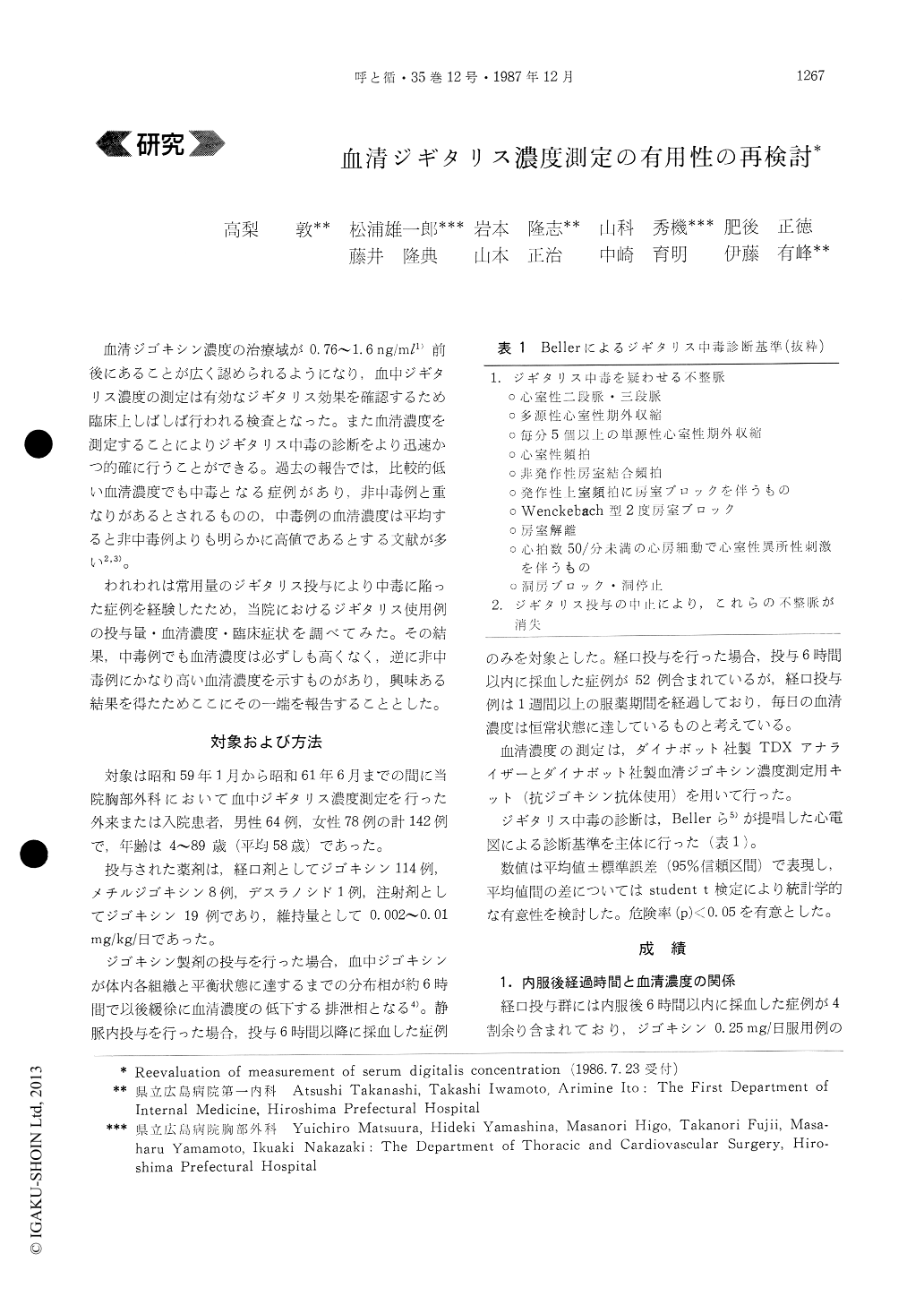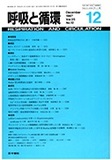Japanese
English
- 有料閲覧
- Abstract 文献概要
- 1ページ目 Look Inside
血清ジゴキシン濃度の治療域が0.76〜1.6ng/ml1)前後にあることが広く認められるようになり,血中ジギタリス濃度の測定は有効なジギタリス効果を確認するため臨床上しばしば行われる検査となった。また血清濃度を測定することによりジギタリス中毒の診断をより迅速かつ的確に行うことができる。過去の報告では,比較的低い血清濃度でも中毒となる症例があり,非中毒例と重なりがあるとされるものの,中毒例の血清濃度は平均すると非中毒例よりも明らかに高値であるとする文献が多い2,3)。
われわれは常用量のジギタリス投与により中毒に陥った症例を経験したため,当院におけるジギタリス使用例の投与量・血清濃度・臨床症状を調べてみた。その結果,中毒例でも血清濃度は必ずしも高くなく,逆に非中毒例にかなり高い血清濃度を示すものがあり,興味ある結果を得たためここにその一端を報告することとした。
Serum digoxin concentraion was measured at our-hospital when patients took relatively high doses or they showed symptoms of digitalis intoxication These data were summed up and discussed.
Serum digoxin concentration had no apparent relation with doses nor time. It was supposed these variance resulted mainly from individual difference. Diagnosis of digitalis intoxication was mainly founded on arrythmia. Intoxication was disappeare several days after quit of digitalis. Some intoxicated patients' serum concentration was not so high and there was no significant difference of mean serum concentration between intoxicated and non-intoxicated patients. Measurement of serum concentration was very helpful in some cases but decent serum concen-tration did not exclude the diagnosis of intoxication when possible symptoms existed.

Copyright © 1987, Igaku-Shoin Ltd. All rights reserved.


